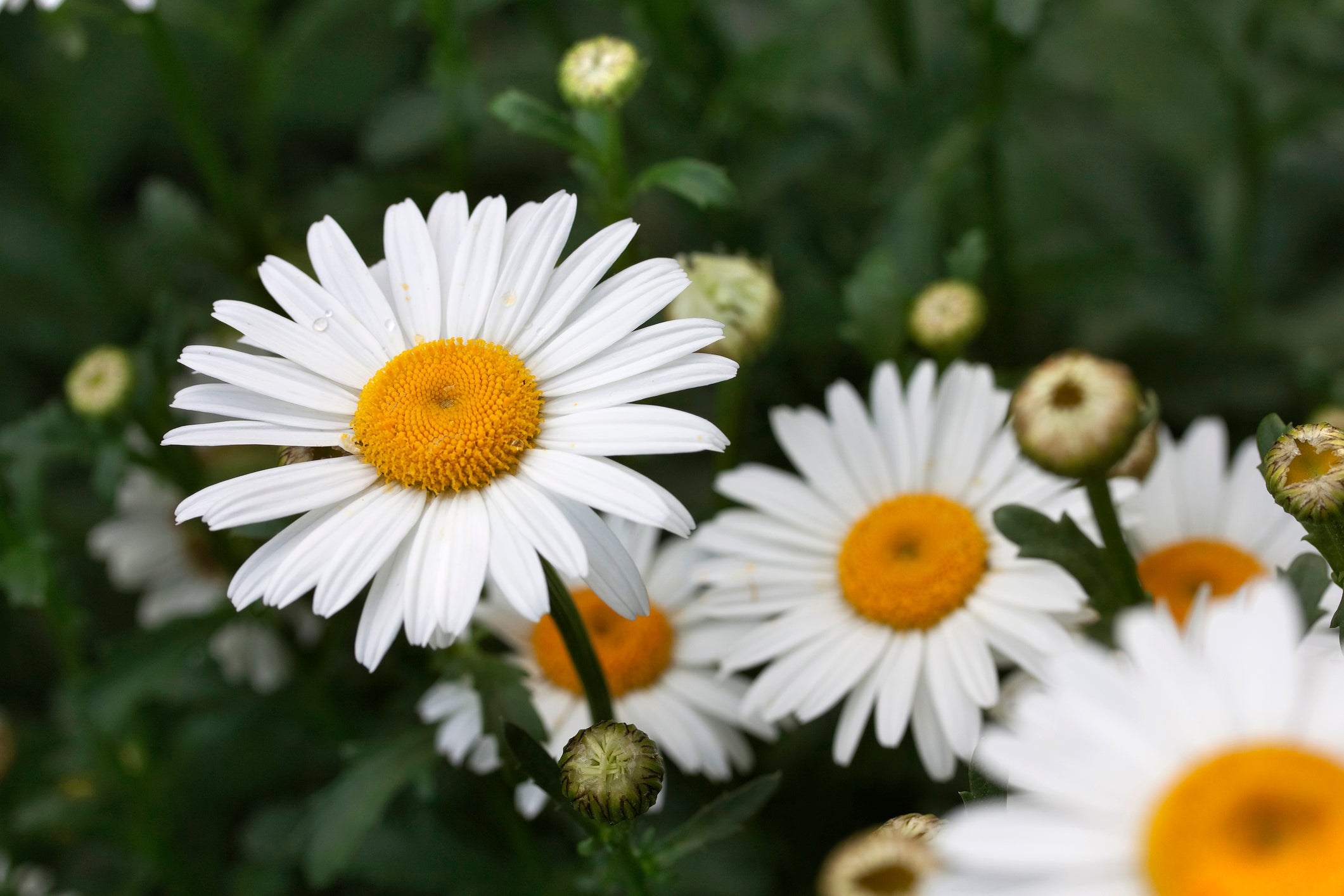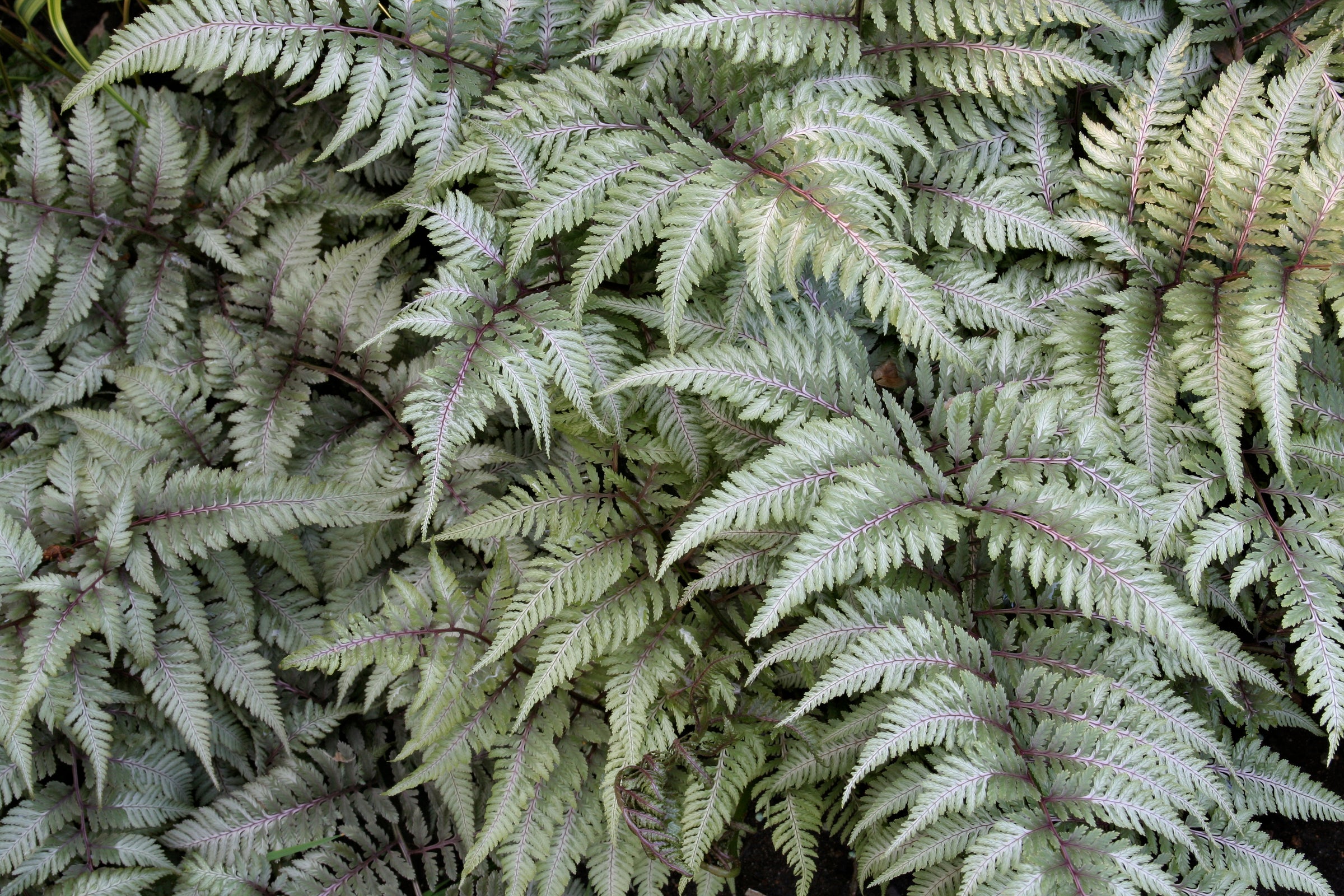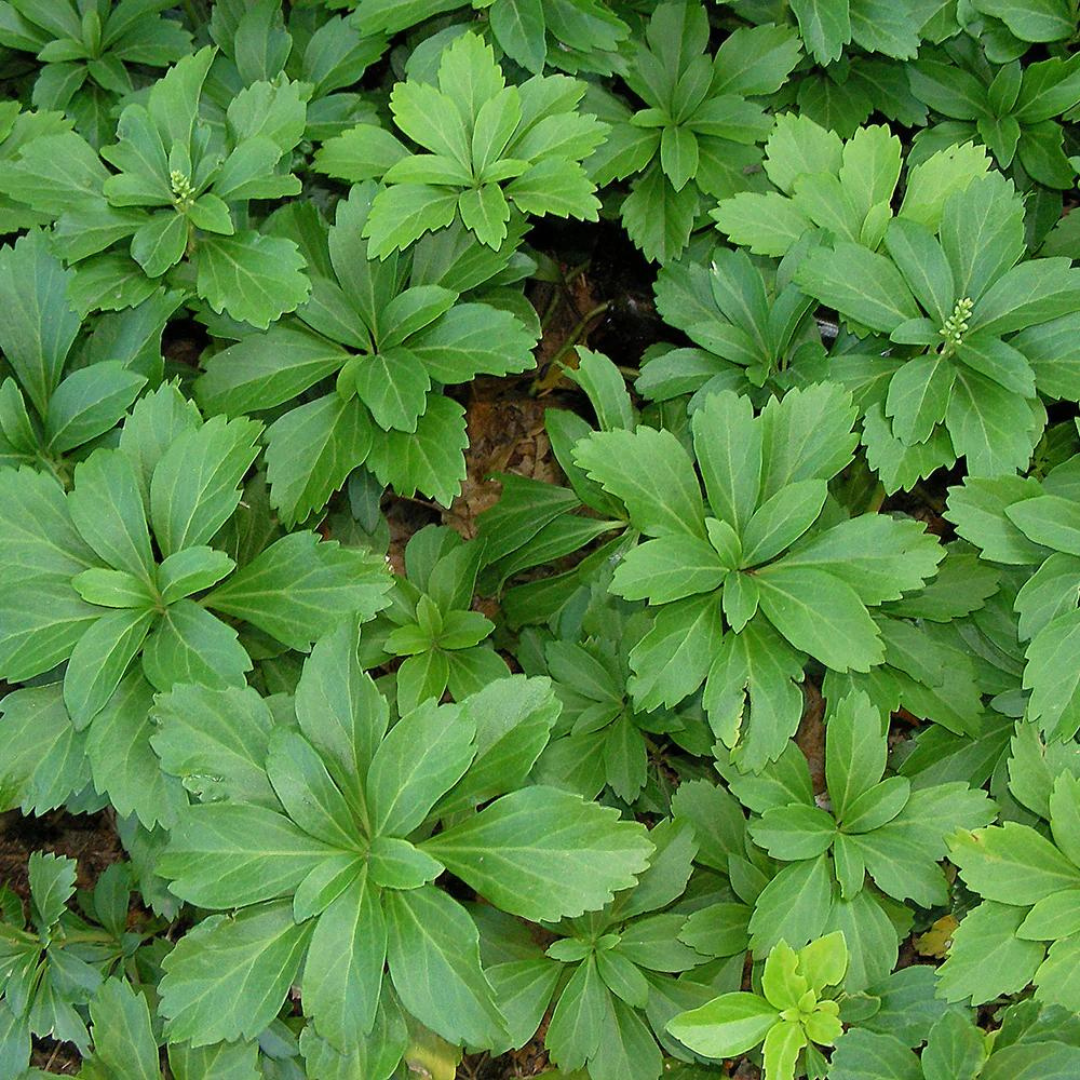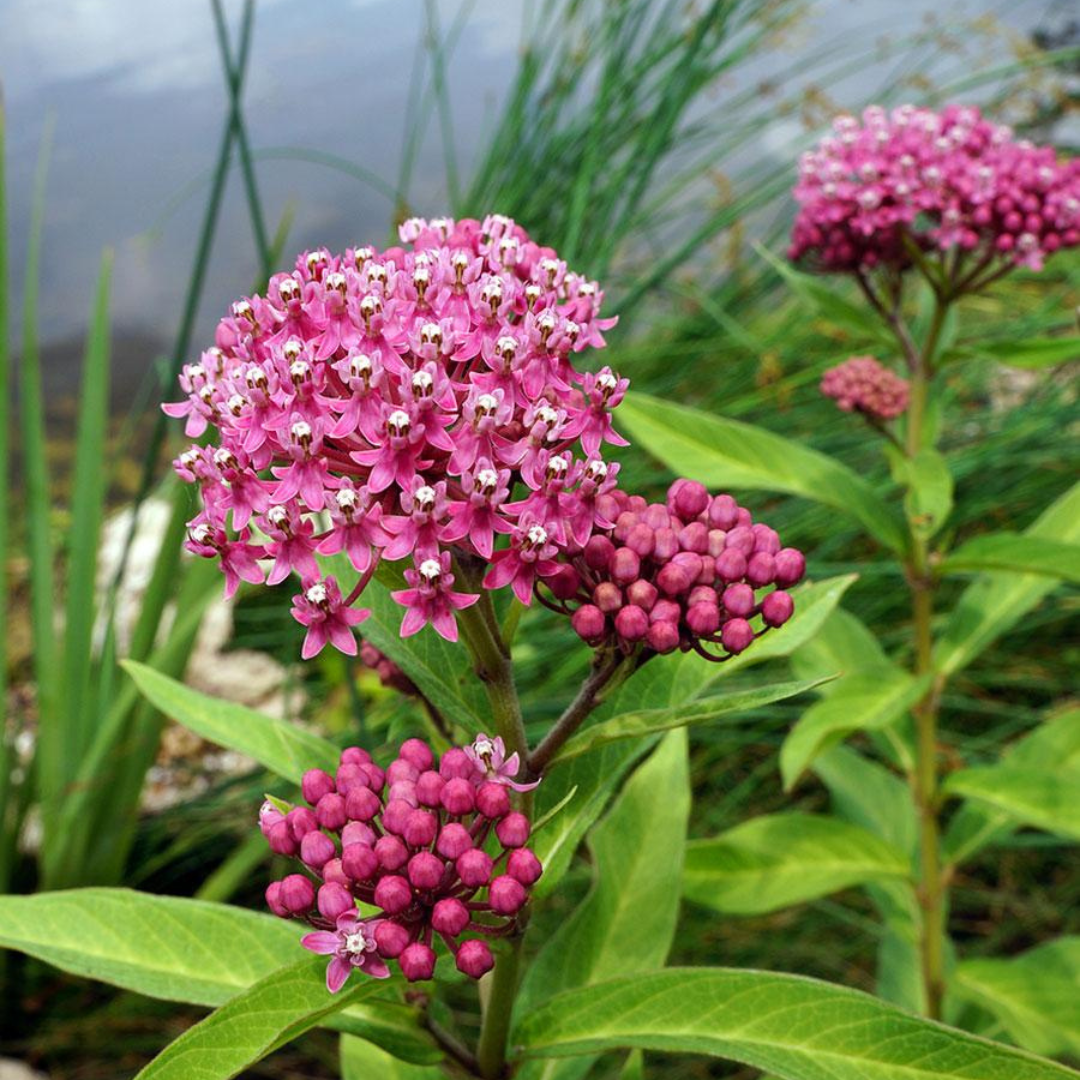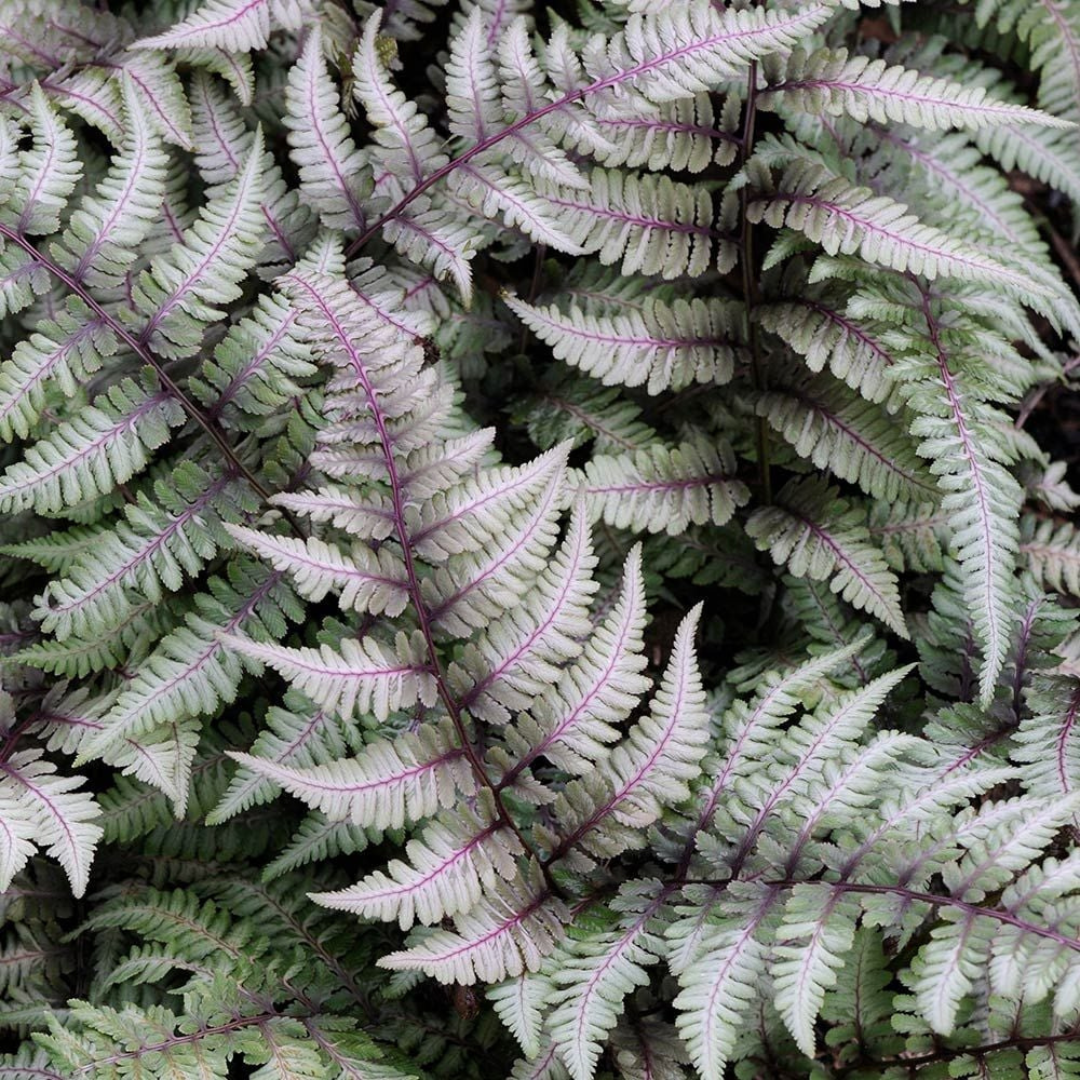
Athyrium 'Japanese Painted Fern'
Add to Wishlist Partial Sun
Partial Sun
 Full Shade
Full Shade
 Deer Resistant
Deer Resistant
 Low Maintenance
Low Maintenance
- In stock, ready to ship
- Backordered, shipping soon
Athyrium niponicum var. pictum: Japanese Painted Fern
A classic for good reason, the Japanese Painted Fern dazzles in shade with its soft silver fronds etched in tones of violet, pewter, and green. Each leaflet is finely divided, lending the plant an elegant, feathery texture that pairs effortlessly with bolder foliage. Compact and slow-spreading, it forms tidy clumps that brighten dim corners with subtle colour and shimmering detail. This fern is a staple for refined woodland plantings and excels in both ground-level groupings and container displays.
Plant Characteristics:
- Height: 30–45 cm
- Spread: 45–60 cm
- Flower Colour: None (foliage plant)
- Flowering Period: N/A
- Foliage: Silvery-grey with burgundy and green highlights
- Sunlight Requirements: Part shade to full shade
- Soil Requirements: Moist, well-drained, humus-rich soil
Uses and Benefits: A go-to fern for softening shade beds and adding texture to mixed plantings, Athyrium niponicum brings a luminous quality to darker areas. It thrives under deciduous trees, along woodland paths, or in the shadow of walls and fences. Its foliage remains fresh through the growing season and pairs beautifully with hostas, grasses, and shade bloomers. Deer resistant and low maintenance, it's an easy favourite for both beginners and seasoned gardeners.
Companion Plants: Highlight the silver tones of the Japanese Painted Fern by pairing it with the bold, variegated leaves of Hosta 'Frances Williams', the cascading gold-striped foliage of Hakonechloa macra 'Aureola', and the soft, arching plumes of Astilbe 'Ostrich Plume'. This blend offers contrast in texture, shape, and bloom form—ideal for a graceful, multi-layered shade garden composition.
Care Instructions: Keep soil consistently moist and enriched with compost or leaf mould. Cut back old fronds in early spring to make way for new growth. Best planted where protected from wind and direct sun. Division is rarely necessary but may be done in early spring to rejuvenate older clumps or create new plantings.
History: Native to forested slopes in eastern Asia, Athyrium niponicum var. pictum was one of the first ornamental ferns to gain popularity in North American gardens. Awarded the Royal Horticultural Society’s Award of Garden Merit, it continues to be one of the most widely grown and admired ferns in cultivation.
Final Thoughts: Subtle yet striking, the Japanese Painted Fern offers enduring beauty and elegant texture that lights up even the deepest shade. A garden classic that never loses its charm.


